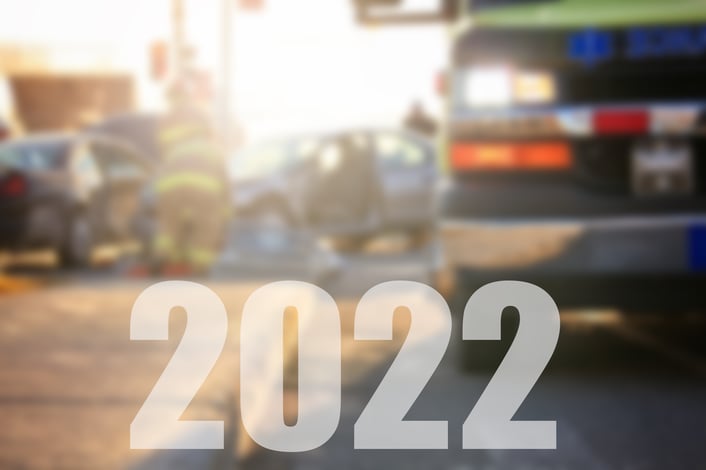
Each new year comes with a new set of challenges for EMS teams, but some ongoing issues medical professionals faced in 2021 also serve as strong indicators for what’s to come in 2022.
From COVID-19 variants to operational issues, here are some challenges that should remain on your radar during your team’s 2022 planning:
COVID-19
As evidenced by ongoing news about Omicron and other COVID-19 variants, the virus isn’t going away any time soon, and it will take a while for things to return to “normal.” Although vaccines and booster shots are now being widely administered to defend against the spread of the virus, more variants will likely be discovered in the new year, and many of the airway management strategies practiced during the pandemic will still apply. These include:
- Using the SALAD technique with COVID-19 patients: The Suction Assisted Laryngoscopy and Airway Decontamination (SALAD) technique is often implemented as a lower-risk alternative to traditional airway suctioning and, when done correctly, it can may also protect EMS personnel from airborne viruses. Clearing the airway prior to intubation is required for all patients with serious cases of COVID-19, and SSCOR’s SDC Catheter™ (Formerly the SSCOR DuCanto Catheter®) is meant for clearing the airway when performing the SALAD technique, as its design is specifically tailored to the shape of patient airways.
- Employee protection against COVID-19 while treating patients: EMTs and paramedics should remain vigilant about protecting themselves from the virus by practicing basic infection prevention, treating all patients as potentially COVID-positive, working efficiently while not rushing and properly storing all equipment before and after each use.
In addition to addressing patients’ ongoing physical needs, it’s important to acknowledge the decline in emotional support that many patients have experienced over the course of the pandemic. Your EMS team should continue to remain sensitive to patients’ mental and emotional needs, as patients often feel alone when having to endure treatments such as intubation.
Supply Chain Issues
Everyone has been talking about supply chain issues in recent months, and it’s not just a problem for people waiting on late holiday gifts — supply chain delays are also having a major impact on the medical supply industry. Supply chain management has been an increasingly important consideration recently as hospitals and health systems have faced shortages of personal protective equipment and other essential medical supplies.
As of October 2021, according to Becker’s Hospital Review, 99% of hospitals and health systems report challenges in supply procurement. While this statistic certainly doesn’t bode well for the industry in 2022, there are several strategies hospitals can employ to mitigate supply chain issues, including forecasting product and material needs, adjusting timelines for delayed shipping and building closer relationships with suppliers.
In response to these ongoing challenges, your team should continue taking routine inventory of all supplies to ensure you have all equipment and accessories needed for different patient scenarios. EMS kits should always be stocked with a range of adjuncts, including catheters, suction tubing, extra canisters, extra batteries (both rechargeable and alkaline) and approved disinfectant and cleaning materials.
Staffing and Hiring Obstacles
As with all industries in the wake of the COVID-19 pandemic, healthcare institutions have been heavily impacted by staffing shortages. Our friends in the industry have told us that, due to medical departments being short-staffed, administrative personnel who are typically not in the field are having to go on 911 calls themselves. Additionally, many EMS departments are considering hiring non-EMTs/medics to drive emergency vehicles, as a significant number of EMTs did not return to their positions after taking time off in the pandemic.
Other staffing and hiring-related issues that have continued to impact healthcare systems include:
- Short staffing among county EMS providers.
- Managers in medical departments having to control inventory for everyday products that are often on back order. As a result, these individuals often don’t have time to plan their budgets properly, consider new products or even sit down with dealer representatives to review future purchases. This is causing concern for many about budget finalization for next year.
- Communication changing significantly within emergency departments — some department heads have been communicating with suppliers almost exclusively over text and email regarding back-order updates.
It’s hard to predict exactly what the medical industry will look like in the new year but looking closely at some of the continued challenges hospitals and emergency responders have faced in 2021 will allow EMS teams to approach emergency preparedness as proactively and successfully as possible for 2022. To learn more about how these challenges will continue to impact you and your team in the new year, be sure to check out more articles on the SSCOR blog.














